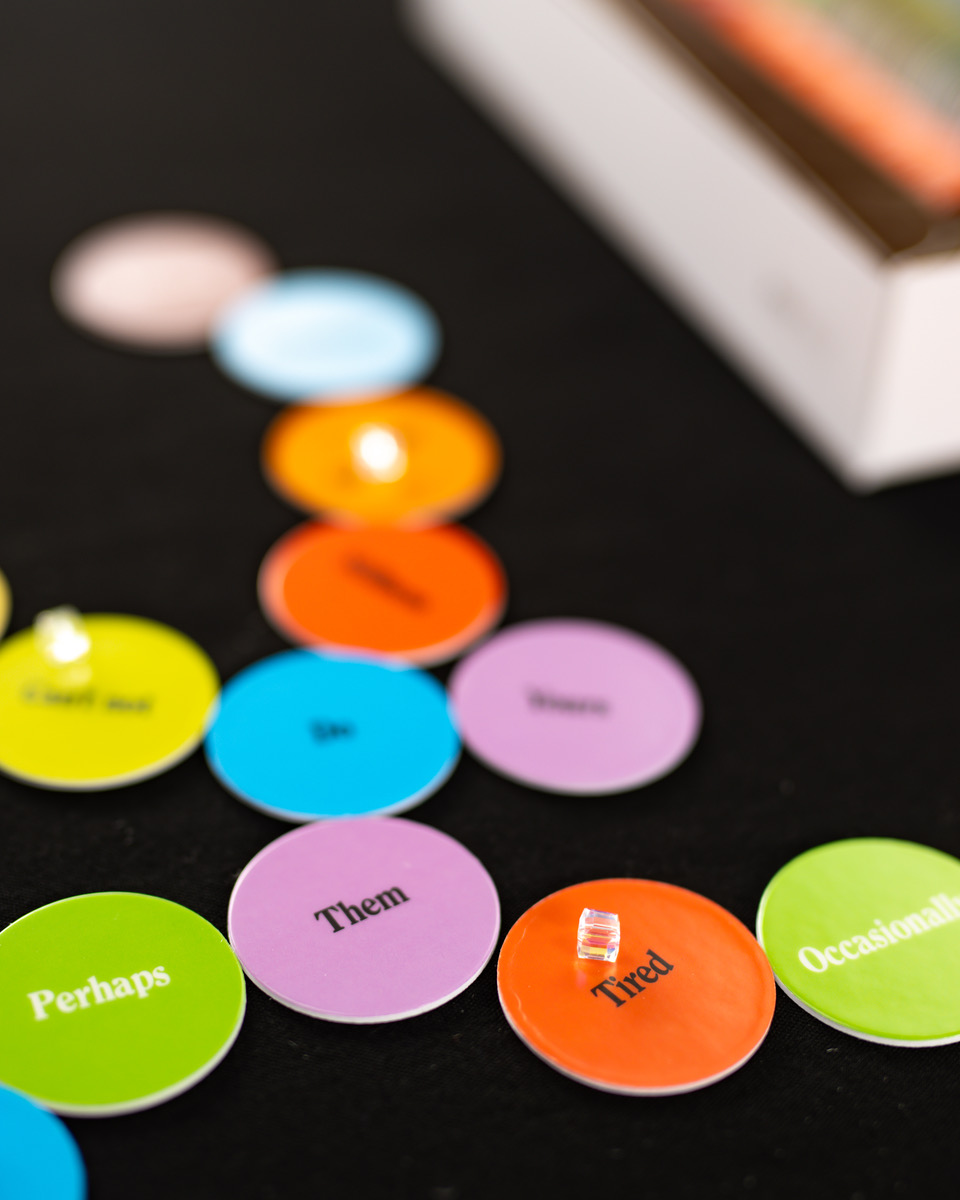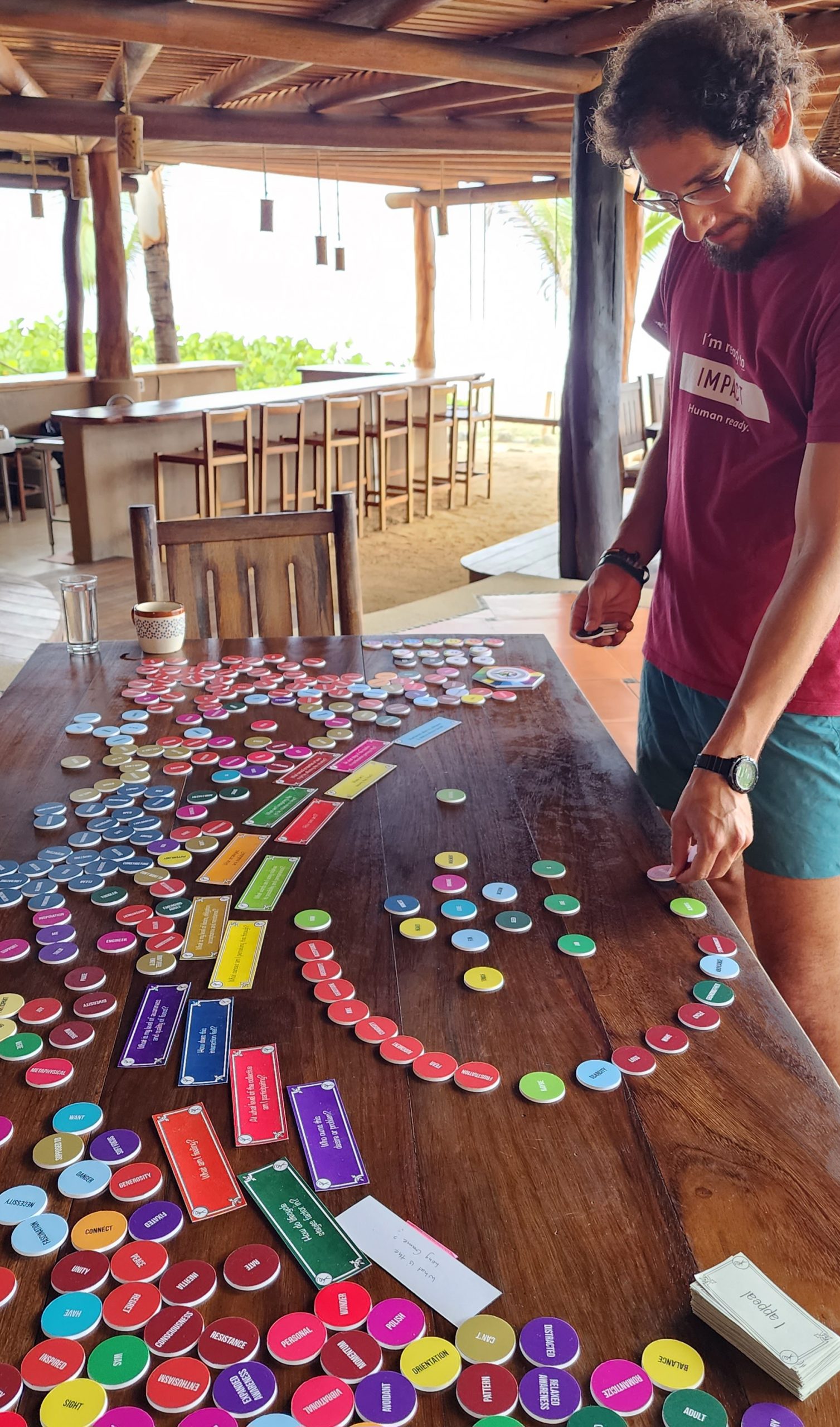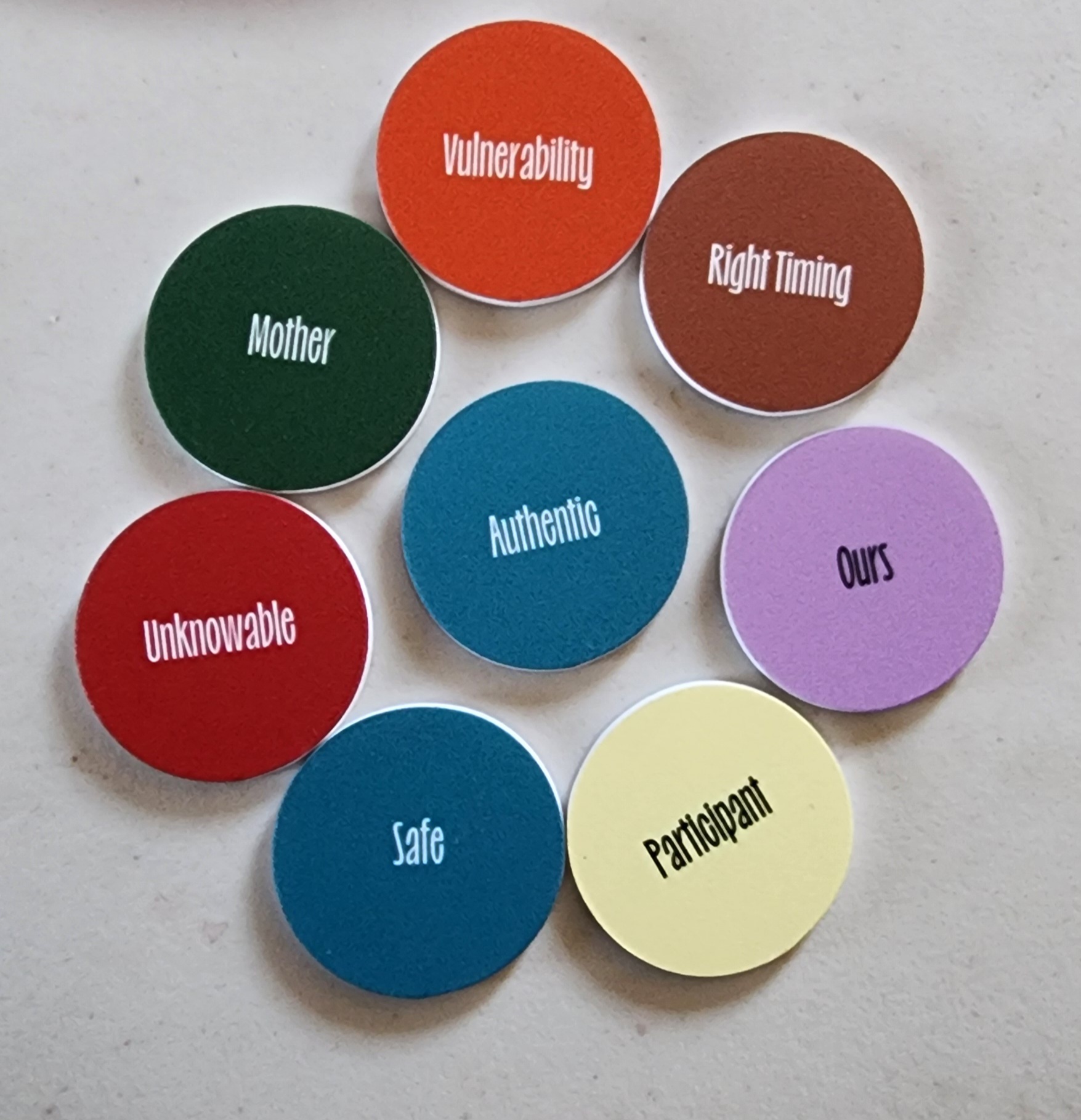How to Play Word Trails
Or: How to Meet a Game Halfway
To ask “how do you play Word Trails?” is a bit like asking “how do you play with a dog?” or “how do you play in nature?” The answer isn’t black and white—it’s an invitation to show up and see what happens.
Word Trails is less a game you master and more a conversation you enter. It meets you where you are—in your mood, your curiosity, your way of thinking—and responds. Some days it might feel like a puzzle. Other days, like poetry unfolding. Sometimes it challenges you; sometimes it simply walks alongside you.
The invitation is to expand how you think about “playing” and “games.” Let go of winning and losing. Instead, think about exploring, discovering, being surprised. Think about the way a child plays: with presence, with openness, with delight in what emerges.
The real question isn’t so much “how do you play?” as “what happens when you engage?”
And there’s only one way to find out.

Four Ways to Enter
Word Trails meets you however you choose to arrive: alone, with one other, with a group, or with a guide leading the way.
Solo
This is your space to get acquainted—with the game, with yourself, with whatever you’re carrying. Maybe you’re just curious to see what’s there. Maybe you need to catch up with yourself, slow the world down, find your footing. No one’s watching. No one’s asking. Just you and what emerges.
Paired
A gentle step toward including another. Not overwhelming—just one other person joining your introspective space. What happens when two inner worlds meet on the trail?
Group
Now it gets interesting. Others bring variables, surprises, the unpredictable. But you stay sovereign—what’s yours remains yours until you choose to share. Group play can be raucous (campfire stories and laughter) or quiet (friends going deep together). The game holds space for both.
Guided
Here, someone sets the intention and holds the container. A therapist with a client. A mediator with divorcing parents. A leader seeking real conversation with their team. Couples remembering why they came together. Veterans finding their way home. The guide shapes the journey toward a specific destination, but the trail still unfolds organically.
In all modes, trust deepens with time spent on the trail. Consider returning regularly to stay in sync.

Solo Play Ideas
If you’re new and not sure where to start, here’s the simplest beginning:
Pull out one question card, or one action card, maybe three chips. Lay them on the table. Sit with them.
Listen for what wants to happen next.
Do that.
“Do that” might include walking away if that’s what comes. This game is about giving every part of you a voice – including the part that might not want to be here right now. That’s OK too.
It is OK to come back later when it calls to you. If ever. This is a game of choice.
Or try one of these:
Follow a question
Choose a question card. Find answers from the chips spread before you. Let it develop. Add action cards when they feel right.
Pick with intention
Choose one chip of each color—randomly, or with purpose. Most resonant? Least resonant? What you wish you could answer? What you don’t want to look at? Arrange them. Watch how they shift as you work. Find a pattern that feels complete.
Start with action
Lay down an action card. Use the spinner to pick chips. Build trails and see where they lead.
Play with an imaginary other
Make random choices for “them,” then your own. The other player might be someone real or fictional, living or not, human or not. Your house. Your dream. Your anger. Whatever needs a seat at the table.
Say what needs saying
Imagine someone you need to speak to—with love, anger, frustration, whatever’s there. Let it build. Watch it evolve. Use action cards liberally. Make your own if you need more. This is just you and you. No explanations required.
As you will see over repeated play, WordTrails will always meet you wherever you are.
The Elements of the Game
WordTrails contains:
- 300 chips, each carrying a single word, organized into 17 color-coded groups
- 50 Action cards
- 12 Trinkets
- 1 Spinner
Each color group answers a different question, including:
Who owns this? What am I feeling? What’s my level of desire or obligation? What natural forces are at play? What senses am I using? Where am I viewing this from?
The colored question cards sit on the table with their chip groups—visual anchors so you can take in the variety of things being considered. They’re simply there to orient you, not designed to be in play.
The Four Rules
- Authentic choice
You can play. You don’t have to. No pressure, no coercion. Once you begin, you’re in – you belong. You are part of the team. - No take-backs
Once a piece is played, it stays. What’s on the table is what we all work with. - No explanations
Your choices are not asked to make sense to anyone, including you. This is an explanation-free zone. - Use trinkets to convey resonance
When another’s choice of word or action feels especially important, or speaks to you in a meaningful way, mark it with a trinket.
These four simple rules create radical safety. Judgment, guilt, shame, and blame naturally vaporize when there’s nothing to explain, justify, or defend. What has been hidden underneath all that can rise to the surface and be set free.
The Premise
We’re heading out on an adventure together—into territory none of us has charted before. Even in a guided game, we don’t know what we’ll create today.
We start from right here. Conditions are what they are. We’re each carrying whatever we carry. All possibilities and actions are available for choosing.
The adventure is this: taking things step by step, watching, listening, responding to each other in turn. Everyone gets to privately witness what emerges and how it feels.
We build trails together, in real time, without worry about judgment.
Crossing the Threshold
The fluid, unscripted nature of play can feel unfamiliar, even intimidating. This is natural—not something to fear or be put off by.
For some, this feels like a big leap (their system senses something might shift). For others, it’s a leap of faith into something not yet understood. For some, it’s just an easy next step.
All of these are fine. It’ll be whatever it is for you, and it may surprise you—feeling different at different times, in different conditions.

The Introductory Game for Pairs or Groups
Setup
Spread all chips around a central working space, each color group with its question card. Stack the action cards. Place the spinner within reach. Divide trinkets equally among players.
Begin
Review the rules. Pause, connect, agree to proceed.
Phase One: On the Trail Together
Someone selects a chip or card randomly and lays it in the center. This is your entry point.
Players take turns choosing the next piece to play, building on what’s been laid down. Pieces touch, trails form. They develop organically—no rules about what goes where or how trails “should” look.
When another player’s choice resonates with you—a “me too” moment—place one of your trinkets on that piece.
Phase one ends when all trinkets are placed.
Phase Two: At the Campfire, Making S’mores
Pause to honor what’s been created. Perhaps talk briefly about patterns you noticed emerging on the table. Simply noticing. Not explaining.
When everyone is ready, push away all the pieces without trinkets. Bring the twelve trinketed pieces together.
Each player gets a turn to arrange these twelve elements into their own personal design—their s’more.
When it feels complete, they can tell the story of how it emerged, how it flows for them, or let it speak for itself.
The game ends when everyone has created and shared their s’more.
(Photos encouraged.)
Now that it’s time to step out of the game space, and back into your life,
I wonder what will be different?





